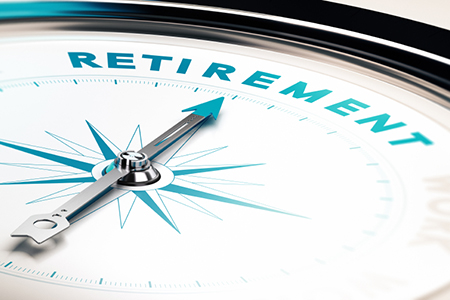 (TNS)—The average retirement age in America is 63, according to an analysis by financial technology company SmartAsset. However, plenty of people don’t retire until after age 65, and some never retire — either by choice or necessity.
(TNS)—The average retirement age in America is 63, according to an analysis by financial technology company SmartAsset. However, plenty of people don’t retire until after age 65, and some never retire — either by choice or necessity.
Still, there are the lucky few who manage to retire early — often long before their peers. Although a survey by the Employee Benefits Research Institute found that only 9 percent of workers expect to retire before 60, some Americans actually manage to give up the 9-to-5 by age 40.
Joe Udo of Retireby40.org achieved this goal, as did Billy and Akaisha Kaderli of RetireEarlyLifestyle.com. Then there’s Pete Adeney of MrMoneyMustache.com, who managed to retire at age 30.
You might be wondering what these individuals did — and, more importantly, what you can do — to gain financial independence after just 10 to 20 years of working. Although there isn’t just one path to early retirement, here are some essential steps to take if you want to retire by 40.
Do the Math
Early retirement doesn’t just happen. If individuals hope to retire by 40, they need to start making smart financial choices early in their careers.
“You’re not going to get there without a plan,” says Todd Tresidder, who retired nearly 20 years ago at the age of 35. Tresidder said that he had always desired financial freedom and began his career with an eye toward early retirement.
To get started, you will need an idea of how much income you’ll require in retirement. A good rule of thumb, according to Fidelity Investments, is to save enough to replace 85 percent of your working salary in retirement.
Of course, the amount can vary depending on the lifestyle you want to have in retirement. However, it’s important that you factor in the cost of all expenses, including health care insurance premiums — which could be much higher than what you’re currently paying, if you receive subsidized coverage through an employer.
Once you have an estimate of the annual income you’ll need in retirement, you can determine how much you need to save to reach financial independence. Tresidder has a retirement calculator on his site, FinancialMentor.com, that can be used for this purpose.
Boost Your Savings Rate
The standard 10 percent to 15 percent of annual income that financial advisers recommend saving is based on the assumption that you’ll be saving that amount over a period of 40 years and that you’ll spend 4 percent a year in retirement.
“If you’re going to retire early, you have to change the time your assets have to grow and how long assets will last,” Tresidder says. “You’re not going to compound your way to wealth.”
Individuals who aim to retire before 40 need to save more than 15 percent annually. In fact, Doug Nordman, founder of The-Military-Guide.com, recommends saving at least 40 percent of your income from the age of 20. That savings rate assumes that you have an investment portfolio with a 6 percent annual rate of return.
The author of “The Military Guide To Financial Independence & Retirement,” Nordman retired from the U.S. Navy’s submarine force in 2002 at the age of 41 by saving at least 40 percent a year for about 20 years. Based on Nordman’s math, aspiring retirees’ assets need to be equal to 25 times their expenses in order to withdraw 4 percent annually from savings in retirement.
It’s important to note that the assets in your portfolio should have a growth rate that’s greater than the inflation rate. For those saving for early retirement, Nordman recommends holding a portfolio of passively managed index funds with low expense ratios and an asset allocation of at least 80 percent stocks.
Said Nordman of how he achieved his goals, “We saved aggressively and invested in mutual funds.”
Focus on Growing Equity
Aside from — or in addition to — building savings by setting aside a hefty percentage of job income, Tresidder suggests that individuals can achieve early financial independence by building equity directly through a business or real estate. This route typically involves leverage, or borrowing money to acquire assets with the goal of increasing the return on investment.
“Getting in debt to reach financial independence is counterintuitive, but income-generating debt, such as a mortgage for a real estate rental, can help you leverage your savings and build wealth faster,” says Pauline Paquin, founder of ReachFinancialIndependence.com. She used her real estate investments to leave the 9-to-5 world at just 29.
Paquin’s first investment was a $400,000 rental property, which she purchased with a 25 percent down payment; she borrowed the rest of the sum. Later, Paquin was able to buy two more properties using cash.
“I make enough in passive income to cover my lifestyle and then some,” she says.
If the cubicle life isn’t allowing you to meet your goals, you might want to consider adjusting your spending and savings habits. By following the above tips, you can take the first step on the road to early retirement.
© 2016 GOBankingRates.com, a ConsumerTrack web property.
Distributed by Tribune Content Agency, LLC.




